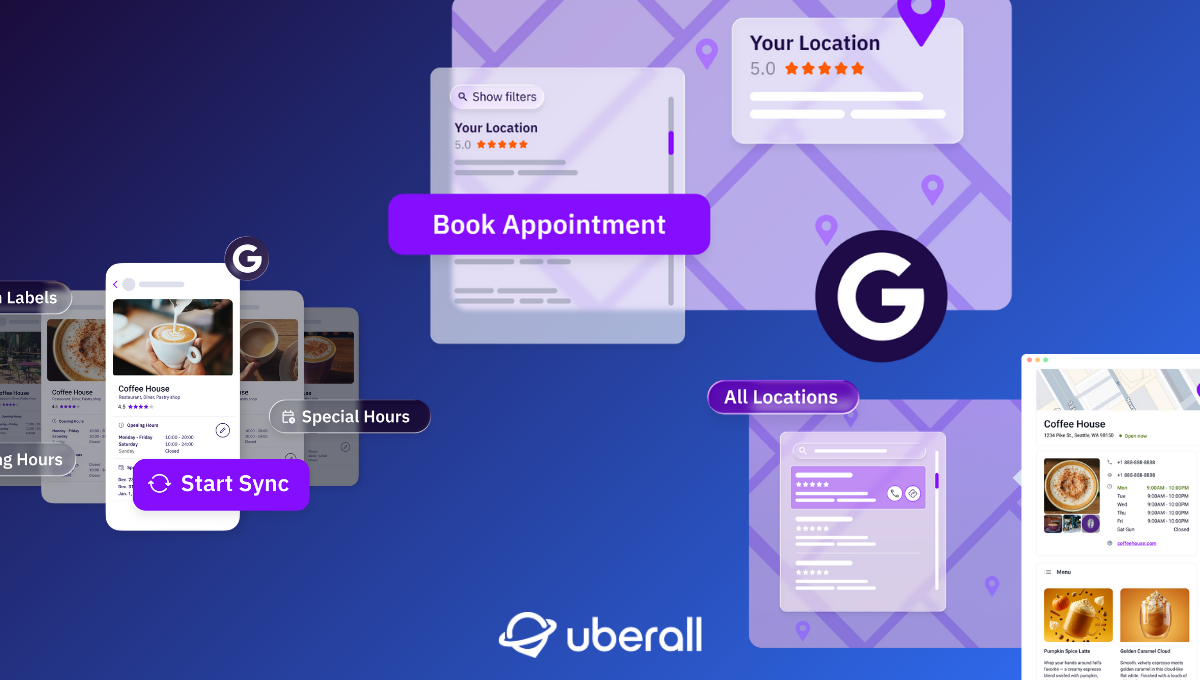
Protecting Your Digital Properties from Negative SEO
Hacking, malicious links, review bombing, and smear campaigns: learn how to protect your digital properties (and your bottom line)!
It’s a bit of a buzzkill but not all digital marketing stems from good intentions—and although Google helped stamp down on some of the industry’s older worst practices (like black hat SEO tricks), you should still remain on guard against negative SEO.
However unethical or frowned upon among digital marketers, bad actors like jealous competitors continue to launch negative SEO attacks. In extreme cases, negative search engine optimization attacks can lead to the search index dropping your website entirely—rendering it invisible until you resolve all of the issues and reestablish your brand’s trustworthiness.
On the other hand, well-meaning actions regarding your search engine optimization can actually lead to negative outcomes if not carefully managed. Given the importance of maintaining a strong and credible online reputation, we’ve dedicated this blog to exploring how to steer clear of negative SEO.
What is Negative SEO?
Negative SEO involves deliberately trying to lower a site’s ranking through tactics such as buying low-quality links, flooding the site with fake negative reviews, or running digital smear campaigns.
The culprit’s goal: some combination of manipulating search engines into penalizing the targeted website and impacting the business’s trustworthiness in the eyes of their audience. And if it’s competitors behind these attacks, they hope to boost their own website’s ranking in the process.
Types of Negative SEO
Negative SEO techniques are varied and numerous, each designed to sabotage a website’s ranking and damage its credibility:
- Hacking is one of the oldest attacks on the internet, where bad actors gain access to your digital property, delete or amend content, redirect URLs to spammy pages, or even inject malicious code intended to harm your audience.
- Manipulating links involves either the creation of malicious links to your website or the removal of your hard-earned links from other sites. That way, attackers disrupt the quality and quantity of backlinks to damage your site's authority and rankings.
- Duplicating content from your website (or "content scraping") happens when attackers publish your content on other sites without permission. The created duplicate content then causes trouble for your site's ranking because search engines struggle to determine which version of the content is original.
- Review bombing is the act of posting a stack of fake reviews with the intention of harming your brand. This tactic can severely damage your reputation, erode customer trust, and potentially deter new customers from engaging with you.
- De-indexing involves changing your robots.txt file on the server that hosts your site, which can remove your site from search indexes altogether. Consequently, your website becomes invisible in search results, effectively cutting off potential traffic.
- Hotlinking, also known as inline linking or leeching, occurs when someone links directly to multimedia files hosted on your website without your permission. This tactic can lead to reduced bandwidth and even website performance.
- Creating fake social profiles is a hostile method to spread misinformation about your brand. This can damage your reputation, mislead your audience, and erode trust in your brand, complicating your efforts to manage your online presence effectively.
These negative SEO practices impact both your ranking and reputation in very real ways. Not only can they cause a drop in your organic SERP position, they can also hit you where it hurts most: your bottom line. Because potential customers tend to reconsider their purchase journey when they encounter markers of untrustworthy businesses.
How Common Is Negative SEO?
Starting with the Penguin update in April 2012, Google started taking punitive action against sites with manipulative links. While this meant you could no longer take gambles with your own search engine optimization links, it did mean you could buy low-quality links for your competitor’s website and have them penalized instead. This is where more sophisticated negative SEO attacks really started to take off.
Some risks are unavoidable when operating online, and Google—as the leading search engine—continues to combat negative SEO tactics.
{{quote}}
Question though: Is that latest drop in ranking because of a negative SEO attack, or is it because a new algorithm tweak demands that you tinker with your own positive SEO strategies?
How to Spot a Negative SEO Attack
Attackers rarely warn targets that you’re in their line of sight, but armed with better knowledge about negative SEO and your digital properties’ greatest points of risk, you can spot the signs more quickly and react accordingly.
Spotting a negative SEO attack involves monitoring several key indicators:
- Watch for sudden, unexplained drops in your search engine rankings or traffic, which can signal malicious activities.
- Keep an eye on your backlink profile for an influx of low-quality or spammy links, as these can harm your site's authority.
- Monitor your site for duplicate content or unauthorized changes that might arise from content scraping.
- Be vigilant for an unusual increase in negative reviews or misleading information about your brand on social media.
Regularly reviewing these factors can help you identify and address negative SEO attacks promptly.
Example: Brose Experienced Unauthorized Listings Changes
Brose kept running into issues with unauthorized changes to their online listings: suddenly, location details were wrong, and incorrect information was popping up. This prompted them to completely overhaul their listings management.
With Uberall, they gained full control over their location data, managing everything centrally and ensuring consistent, accurate listings. The result? Increased online visibility and a stronger brand image.
Combating Negative Search Engine Optimization
Negative SEO will harm your business if left unattended, leading to not only a decline in search engine rankings, but also an overall decrease in web traffic alongside damage to your online reputation, leading to poorer conversion rates. Fixing these all require significant investments of resources—costs, time, manpower.
As the algorithms evolve, negative SEO attacks change with them—so combatting the latest tactics remains an unending task. Where once saboteurs could do enough damage with low-quality backlinks, now attackers turn to review manipulation and bad PR to exploit vulnerabilities at both audience and technical levels.
Luckily, Google has a zero-tolerance policy towards negative SEO tactics, with robust safeguards in place to protect businesses and constant updates to deliberately engineer around the latest forms of black hat activity. In fact, Google maintains an extensive list of penalties for bad SEO practices, ranging from a downgrade in ranking to complete removal from results.
Through all that, where Google goes, other search engines follow. No algorithm wants the reputation of enabling negative SEO tactics. While link manipulation persist as their most direct concern, search engines also need to know about negative SEO without backlinks—a process that requires proactive reporting of issues from the brand side.
So let’s have a look at immediate actions you can take to check if your website has been hit by a negative SEO attack. Best head over to Google Search Console:
- Pinpoint any spammy or low-quality backlinks, and either manually remove the backlink or disavow them in your search console.
- Verify the status of any page you suspect has been duplicated by searching for a Google-selected canonical ( = the URL the search engine has selected as most representative from a set of duplicate pages).
- If your own URL is listed as “inspected URL”, Google considers your page as the most authoritative version of this content
- If our own URL is not listed as “inspected URL”, you’ll need to contact the webmasters who stole your content, and request they remove it or give you proper attribution. If webmasters don’t cooperate, you can file a DMCA complaint with Google.
- Check if any hackers gained unauthorized access to your server or CMS by looking for any security issues or alerts. In the event of a breach, move immediately to change all passwords for anything associated with your website (admin accounts, database logins, etc.) before you begin working through any changes made since they gained access.
Beyond the Google Search Console, you should keep a close eye on your channels:
- Keep a good handle on your reputation and digital PR. A negative SEO attack could include elements of old-fashioned smear campaigns, where bad actors spread false or damaging information to harm your reputation and credibility.
- Remember to track your backlinks as part of your digital reputation management, and protect your paid search traffic, too—click fraud is an “exponentially bigger problem” for most businesses.
- Keep a keen eye on your reviews, especially for the rich snippets and the Google 3 Pack. Fake reviews and review-bombing manipulate these aspects of search engine optimization more easily than attacking your owned content, influencing potential customers to turn away from your business.
It’s a good idea to monitor online mentions of your brand constantly, and across various platforms, including social media as well as search engines. This should alert you to any negative campaigns targeting your brand.
Using Positive SEO Practices to Fight Negative SEO Tactics
No matter the risks, overall search engine optimization remains a cornerstone strategy for achieving durable online visibility and driving traffic acquisition, so attacks require more to land and you recover from them more swiftly.
In other words, positive SEO best practices insulate you against attacks by building your site’s authority and reputation through the basic building blocks of search engine optimization.
- Plan on building out a positive online reputation through engagement with your customers and publishing top quality content.
- Respond to your reviews, both positive and negative, to show you care.
- Shore up your backlink profile and seek to build positive relationships with local directories and listings services.
- Create high-quality content that delivers real value to consumers and is optimized for search engines.
As an added safeguard, work to fully optimize your Google Business Profile. Use the Google categories and attributes to send the right SEO signals and let the algorithm know you can be trusted in the first place. The information in your GBP goes right back into helping you rank for the Google 3 Pack, which can bring added visibility to your brand when customers search with an intent to buy.
Shield Your Site: Local SEO Tools to Combat Negative SEO
Working through these search engine optimization tips and tricks could be hard work if you tried to do everything manually, but there are platforms offering all-in-one alternatives to all that hard labor.
Uberall’s AI-powered platform helps you combat negative SEO by safeguarding your data and allowing you to manage all aspects of your online presence—from location data to reviews—on a single, unified platform. You can also create locator and local pages, plus access insights and analytics that enable continuous improvements and optimizations for your digital properties. Get in touch to see how Uberall can help you elevate your local SEO (before it becomes an issue).
“If you conduct a search on Fiverr for ‘negative SEO’, you will find over 15,000 people willing to do the work for only $5.”
Ready to Transform Your Business?
Connect with our partnership team to learn how Uberall can help you achieve similar results. Get a personalized consultation and discover the opportunities waiting for your business.
Resources











